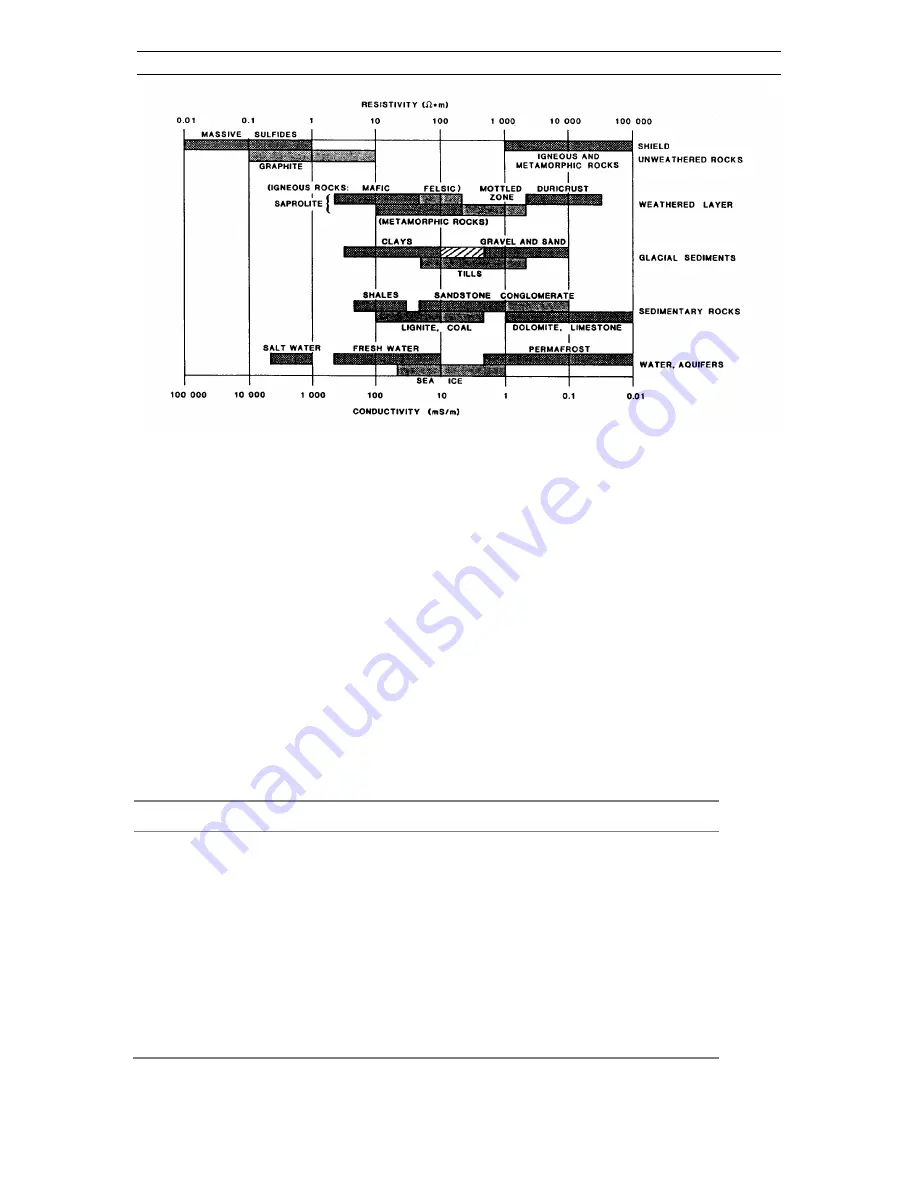
ABEM Terrameter SAS 1000 / SAS 4000
- 77 -
The amount of water in a material depends on the porosity, which may be divided into
primary and secondary porosity. Primary porosity consists of pore spaces between the mineral
particles, and occurs in soils and sedimentary rocks. Secondary porosity consists of fractures
and weathered zones, and this is the most important porosity in crystalline rock such as
granite and gneiss. Secondary porosity may also be important in certain sedimentary rocks,
such as limestone. Even if the porosity is rather low, the electrical conduction taking place
through water filled pore spaces may reduce the resistivity of the material drastically. The
degree of water saturation will of course affect the resistivity, and the resistivity above the
groundwater level will be higher than below if the material is the same. Consequently, the
method can be used for finding the depth to groundwater in materials where a distinct
groundwater table exists. However, if the content of fine grained material is significant the
water content above the groundwater surface, held by hygroscopic and capillary forces, may
be large enough to dominate the electrical behaviour of the material.
The resistivity of the pore water is determined by the concentration of ions in solution, the
type of ions and the temperature. A range of resistivities for different types of water is given
in table 10-1 below.
Type of water
Resistivity [
m]
Precipitation
30 - 1000
Surface water, in areas of igneous rock
30 - 500
Surface water, in areas of sedimentary rock
10 - 100
Groundwater, in areas of igneous rock
30 - 150
Groundwater, in areas of sedimentary rock
> 1
Sea water
0.2
Drinking water (max. salt content 0,25%)
> 1.8
Water for irrigation and stock watering (max. salt content 0,25%)
> 0.65
Figure 23. Typical ranges of electric resistivities of geological materials.
Table 10-1. Electric resistivity of some types of natural waters
















































